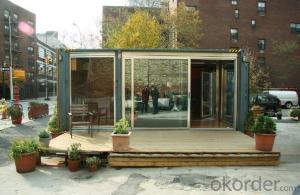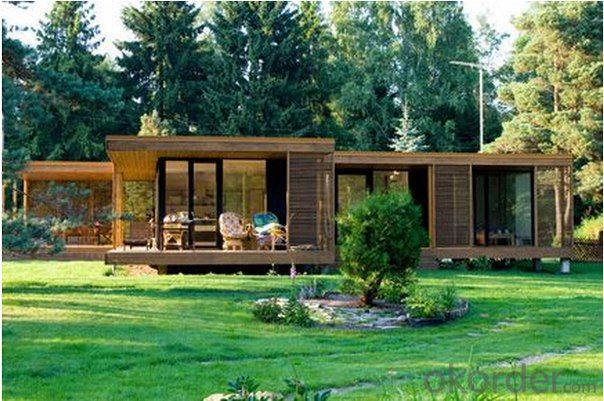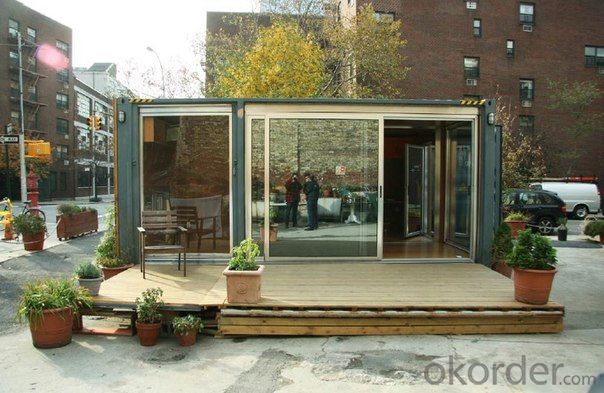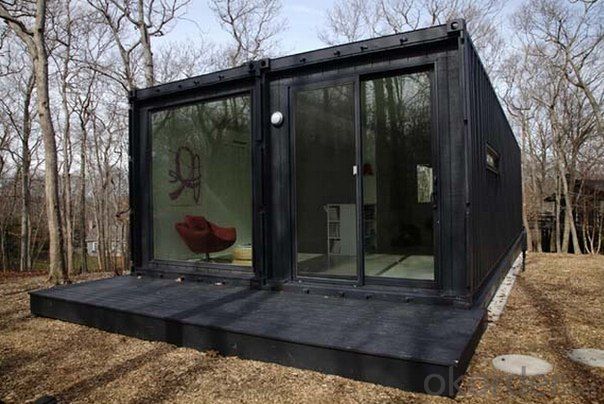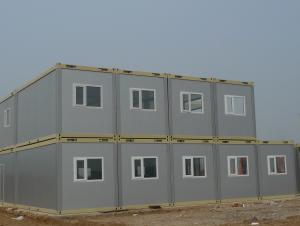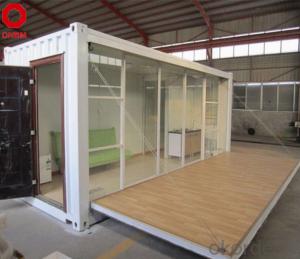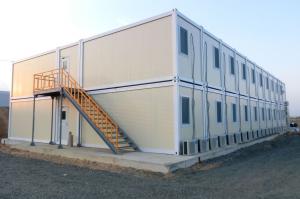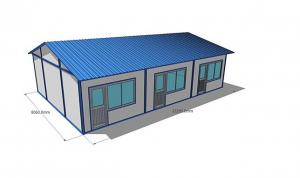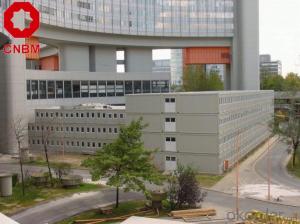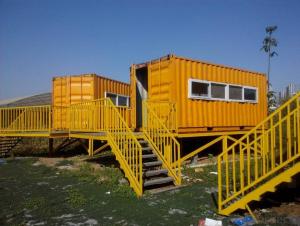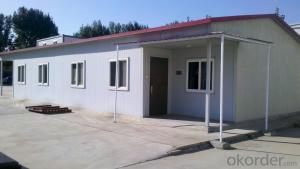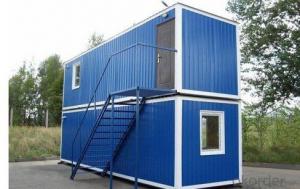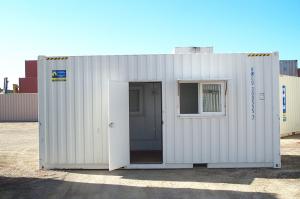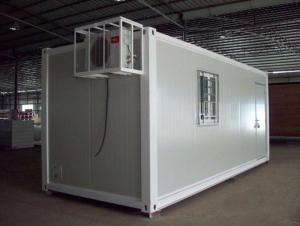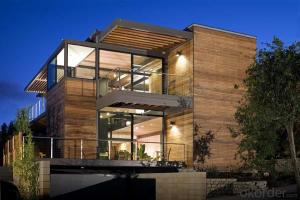Container house / container home / prefab house
- Loading Port:
- Tianjin
- Payment Terms:
- TT OR LC
- Min Order Qty:
- 7 set
- Supply Capability:
- 200000 set/month
OKorder Service Pledge
OKorder Financial Service
You Might Also Like
Container house / container home / prefab house


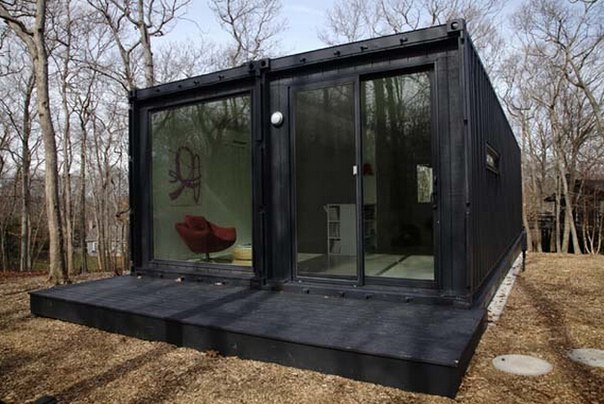
Specifications
Design Portable Modular Container Houses
1.Fast Installment & Energy Saving
2.Low Cost
Container houses are based on shipping containers, module structure construction and interior decoration are finished in the factory using manufacturing production. These modules can be fast assembled into houses with various styles according to different uses and functions on site. Interior decoration, in accordance with local national standards for water, electric, fireproof, sound insulation, heat preservation, environmental protection and all other requirements .
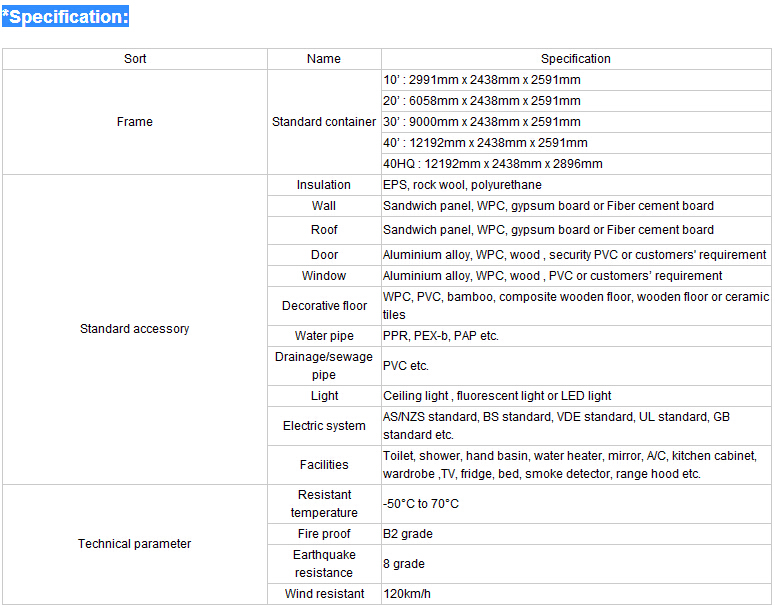
Production information of container houses:
*Packaging:
Bubble foil, plywood based, or metal frame box on client’s requirements.
20’ SOC container can load 4 units 20’ unit, 40’ HQ SOC can load 4 units 40’ units, 40’HQ can load 4X30’ units.
All the materials are well fixed and tight to prevent the moving during the transport.
Customized are available.
*Delivery Detail:
30 days after deposit confirmed
Product types: container house / container home / container office / container hotel / prefab houses
Some designs to show:
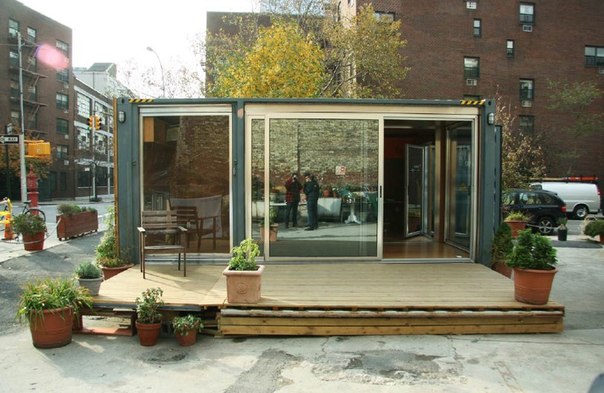
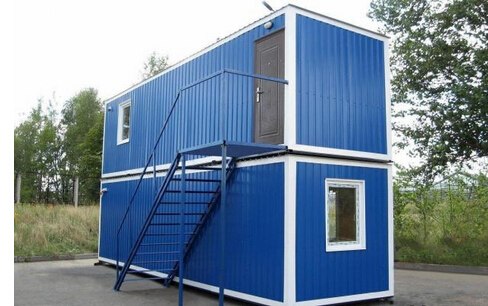
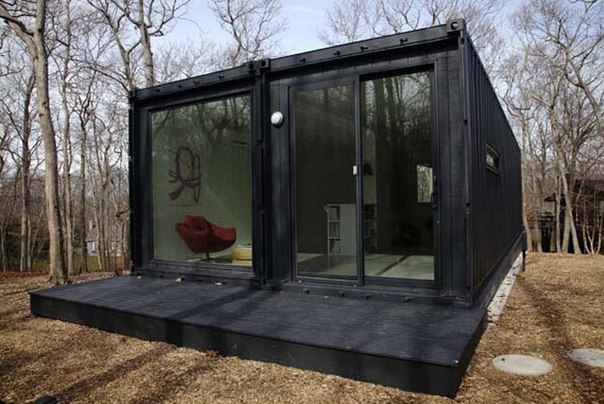
The construction cases to show:

- Q: Can container houses be designed with a community kitchen or dining area?
- Certainly, container houses have the potential to incorporate a community kitchen or dining area into their design. Although container houses are typically associated with limited living spaces, they can be altered and personalized to cater to a variety of preferences and needs, including communal areas. By using open floor plans, container houses can be created to feature a shared space that includes a community kitchen or dining area. This can be achieved either by combining multiple containers or by removing specific walls and partitions to establish a more expansive area. Regarding the kitchen, container houses can be equipped with all the essential appliances and amenities, such as stoves, ovens, refrigerators, and sinks. The kitchen area can be designed to accommodate multiple individuals simultaneously cooking or preparing food. Moreover, communal dining spaces can be integrated into the container house design, providing an area for residents to gather and enjoy meals together. It is important to consider that the design and layout of a container house with a community kitchen or dining area will depend on the specific preferences and requirements of the residents. Factors such as available space, budget, and desired level of privacy will influence the final design. However, with adequate planning and customization, container houses can certainly facilitate communal living arrangements and promote a sense of community among residents.
- Q: Can container houses be financed like traditional homes?
- Indeed, container houses have the potential to be funded in a manner akin to conventional residences. Despite their distinct construction techniques and materials, container houses possess the status of real estate and consequently qualify for financing via customary home loans or mortgages. Lenders generally assess comparable aspects as they would for a traditional dwelling, including credit history, income, and the appraised worth of the property. Nevertheless, it is crucial to acknowledge that not all lenders may possess expertise in financing container houses, thus necessitating diligent investigation to locate a lender proficient in catering to alternative housing choices.
- Q: Are container houses suitable for areas with limited budget for construction?
- Yes, container houses are suitable for areas with limited budgets for construction. Container houses are cost-effective and affordable compared to traditional construction methods. They offer a cheaper alternative for individuals or communities looking to build homes in areas with limited resources. Additionally, the use of repurposed shipping containers reduces material costs and construction time, making them a practical choice for those with budget constraints.
- Q: Can container houses be designed to have a pet-friendly layout?
- Yes, container houses can definitely be designed to have a pet-friendly layout. There are several key factors to consider when designing a container house with pets in mind. Firstly, it is important to ensure that there is enough space for pets to move around comfortably. Containers can be modified to create larger living areas or multiple levels, allowing for more room for pets to play and explore. Secondly, it is crucial to incorporate pet-friendly materials and finishes into the design. Opting for durable and pet-friendly flooring materials such as laminate, tile, or vinyl will make it easier to clean up any accidents or messes. Additionally, using scratch-resistant materials for walls and furniture can help prevent damage caused by pets. Furthermore, including designated spaces for pets within the house is essential. This might involve incorporating built-in pet beds or crates, as well as creating dedicated play or exercise areas. These designated spaces will provide pets with a sense of ownership and comfort within the home. Additionally, ensuring ample natural light and ventilation in the house is important for the well-being of pets. Including large windows or skylights can provide pets with a view of the outside world and allow for natural airflow, creating a healthier environment for them. Lastly, it is crucial to consider the safety of pets within the container house. This may involve installing pet-friendly gates or barriers to prevent access to certain areas, as well as securing windows and balconies to prevent accidents or escapes. In summary, container houses can be designed to have a pet-friendly layout by considering factors such as space, materials, designated areas, natural light, ventilation, and safety. With careful planning and design, container houses can provide a comfortable and enjoyable living experience for both humans and their furry friends.
- Q: Can container houses be designed with a sustainable water system?
- Yes, container houses can be designed with a sustainable water system. By incorporating rainwater harvesting systems, greywater recycling systems, and efficient plumbing fixtures, container houses can minimize water wastage and reduce reliance on external water sources. Additionally, alternative technologies like composting toilets and water-efficient appliances can further enhance the sustainability of the water system in container houses.
- Q: Can container houses be designed with a built-in storage space?
- Yes, container houses can definitely be designed with a built-in storage space. The nature of shipping containers allows for easy customization, and architects and designers can incorporate storage areas seamlessly within the structure. This can include shelves, cabinets, closets, or even hidden compartments, maximizing the use of space and providing ample storage solutions for the inhabitants.
- Q: Can container houses be designed with a rooftop bar?
- Certainly, rooftop bars can indeed be incorporated into the design of container houses. These houses are incredibly adaptable and can be tailored to meet specific design needs. By carefully considering and engineering the structure, it is possible to integrate a rooftop bar into a container house's layout. The container can be adjusted and reinforced to bear the weight of the rooftop bar, while extra structural components can be added to ensure safety and stability. Additionally, the rooftop area can be fashioned to accommodate seating, a bar counter, and other amenities commonly found in bars. Through clever use of the rooftop space, container houses can optimize their functionality and create distinctive and inventive living environments.
- Q: Can container houses be designed with noise reduction features?
- Yes, container houses can be designed with noise reduction features. Soundproofing techniques such as insulation, double-glazed windows, and acoustic panels can be incorporated into the design to minimize noise transmission and create a quieter living environment.
- Q: Can container houses be built with a traditional bedroom layout?
- Yes, container houses can be built with a traditional bedroom layout. The modular nature of container homes allows for customization and flexibility in design, including the incorporation of traditional bedroom layouts. By combining multiple containers or modifying their interior structure, container houses can accommodate bedrooms with standard features such as walls, doors, windows, and adequate space for furniture placement.
- Q: Can container houses be built on uneven terrain?
- Certainly, container houses have the ability to be constructed on uneven terrain. One of the perks of utilizing shipping containers for housing purposes lies in their versatility and adaptability to various landscapes. By adequately preparing and working on the foundation, containers can be positioned and secured on uneven terrain. The usual procedure involves leveling the ground, establishing a solid foundation, and utilizing support beams or piers to guarantee stability. Furthermore, adjustments can be made directly to the containers themselves, such as cutting and welding, in order to conform to the uneven terrain and establish a level living area inside. All in all, albeit some additional planning and construction may be necessary, container houses can undoubtedly be built on uneven terrain.
Send your message to us
Container house / container home / prefab house
- Loading Port:
- Tianjin
- Payment Terms:
- TT OR LC
- Min Order Qty:
- 7 set
- Supply Capability:
- 200000 set/month
OKorder Service Pledge
OKorder Financial Service
Similar products
Hot products
Hot Searches
Related keywords

